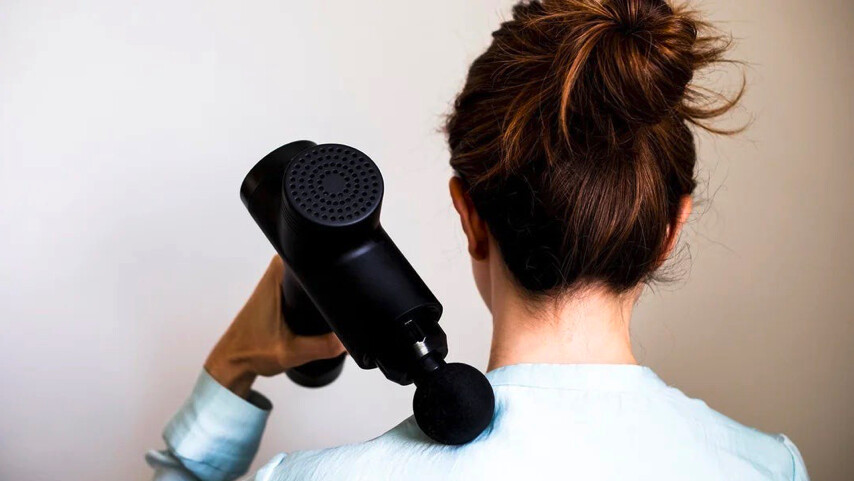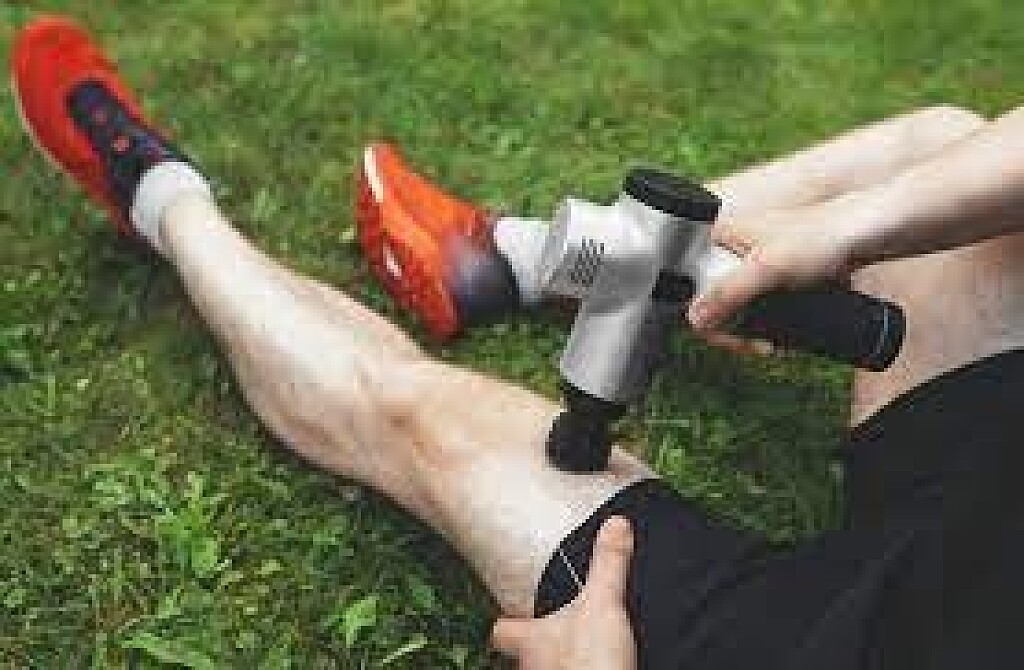Running News Daily
Running News Daily is edited by Bob Anderson. Send your news items to bob@mybestruns.com Advertising opportunities available. Train the Kenyan Way at KATA Kenya and Portugal owned and operated by Bob Anderson. Be sure to catch our movie A Long Run the movie KATA Running Camps and KATA Potato Farms - 31 now open in Kenya! https://kata.ke/
Index to Daily Posts · Sign Up For Updates · Run The World Feed
5 Body Parts You Shouldn't Use A Massage Gun On
Percussion massage guns can have great benefits, from decreasing muscle tension, increasing mobility and elevating blood flow to helping with pain and typical workout soreness. And by now, the chances are you either own one of these tools, have used one or know someone who sings its praises. Nowadays, you may also encounter them when you see a massage therapist, chiropractor or physical therapist.
Just like a typical massage or a foam roller, percussion massage tools work by loosening muscles and fascia, the coating around muscle tissue. But as with any tool, it has a time, a purpose and a place.

It may be tempting to use your massage gun on any old spot that feels sore with no further thought, but some spots present risks. Painful inflammation, torn tendons, organ or nerve damage and even serious long-term injuries could result from improper placement.
Here, we look at the top 5 spots to avoid to improve your massage gun safety.1. Greater trochanter
Stand on two feet. Put your hands in your pockets. Shift your weight side to side, allowing your pelvis to shift. As you stick your hips out to one side, you will feel a bony area on that side of your hip push into your hand. This is a part of your thigh bone called a greater trochanter.
It has a fluid sac surrounding it called a bursa, and bursas and bones don't like friction. They respond by becoming inflamed and painful, and using the massage gun on this area can create friction that leads to pain and inflammation on the side of your hip.
Instead of aiming for the greater trochanter, use the massage gun on your quads and glutes. Loosening up those areas can help with hip, knee and even lower back mobility. If the side of your hip is already sore, ice might be a better tool.
2. Kidneys
Have you heard of organ damage done by a massage gun? Kidneys, for example, are particularly susceptible because they are close to the surface in the middle of your back. While you think you are getting a good back massage, digging into the areas directly over the kidneys could lead to vibrating organs that weren't meant for such force.
So, where exactly are your kidneys? Take both hands and reach around to your back, as if you were about to clasp a bra strap. On either sides of your spine, you will feel rib bones. Try to find your lowest rib bones. Bones feel harder than muscle, and the lowest ones are often a bit tender. The lowest ones line up with your kidneys. Now, imagine that you placed a grapefruit on top of each of these lowest ribs. This is the area you need to steer clear of with your massage gun.
Massage guns can be great for relieving back tension, as long as they are on muscles versus organs and bones.
3. Biceps tendon
Take one hand and reach across to the front of your opposite shoulder. Your long head of biceps tendon lives under the area you are now touching. Pain and tension in this area are very common, especially if you have weakness in your rotator cuff, or weakness in the muscles between your shoulder blades. While it is tempting to relieve pain and tension by putting the massage gun here, think again! This tendon is not as tough as it seems; pressure and vibration can inflame or even tear it.
Instead of attempting to treat pain on the front of your shoulder, go for the common underlying problem! Often the first steps are working on rotator cuff strength, middle back strength and being mindful of your lifting techniques.4. First rib
Reach one hand to the top of the opposite shoulder-the area where the base of the neck and shoulder meet. Many of us know this area as "upper traps," and often a spot plagued by chronic neck and shoulder tension. If you lightly dig in a bit, you will feel a knot that doesn't go away-no matter how much you massage it. The reason it doesn't go away is because it is not a muscle knot; it's a bone. That bone is your first rib. While it's tempting to drive the massage gun into this area to decrease nagging neck tension, don't do it!
Directly under your first rib, you have all the nerves and blood vessels that supply your arms and hands. A little too much pressure in this area can compress the nerves and blood vessels. Nerve compression can send tingles or even pain down your arm, and that kind of nerve injury can take months (if not years) to resolve. While the massage gun is buzzing away, it's easy to miss the fact that your arm might feel an unusual tingle that could be your warning of nerve compression.
If you still want to massage your neck tension away, use your hands instead of a tool; using your hands allows you to feel if you are on that bony first rib, and allows you to quickly detect (and move away from) any spots that send a tingle down your arm.
5. Spine
You most likely have a good idea of exactly where your spine is already, but you can reach around your back and pinpoint where those bones are to make sure you don't aggravate them with percussion massage. Your spinal cord, discs, and nerve roots are all under those bony edges that you feel, and none of them were designed to handle direct vibration forces. Agitating these bones with a massage gun presents a greater risk than benefit because irritating a nerve root, disc or even the spinal cord itself could lead to very serious and complicated spine injuries.
What's a safer alternative? Generally, foam rolling (even if the foam roller vibrates). The foam roller is a much broader surface, so it doesn't dig directly into targeted spots in your spine. The foam roller isn't for everyone though - If you've ever been told you had low bone density, be sure to check with your doctor before trying this alternative.
Keep the massage gun, but use your new anatomy knowledge to choose placement safety. Even with safer placement, be sure to avoid pressing hard into spots while the massage gun is vibrating. Gentle pressure is generally fine, but digging in could press on other organs, nerves, or bones that can lead to injuries, too.
by Trail Runner Magazine
Login to leave a comment




